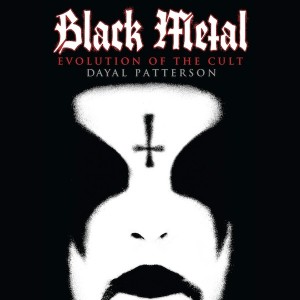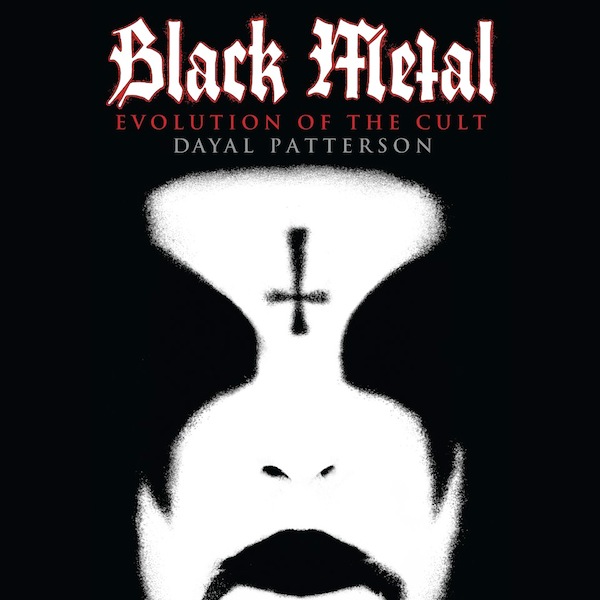 It’s fair to say that most books and indeed films tackling the subject of black metal are woefully inadequate. They are either put together by outsiders trying to look in and not fully understanding or integrating with the subject matter, or they simply sensationalise the same old stories that we have all heard again and again. Lords Of Chaos from the same publishers written by Michael Moynihan and Didrik Soderlind did a fantastic job at being the ultimate treatise on the crimes in Norway, coming at the right time in 1999 for the relevant information to have been gathered, putting everything in to perspective around those infamous events and their implications within the scene beyond. Short of reading mainly edited interviews in magazines though there is still a certain mystique about black metal, certainly for those interested on the outside and it was high time that something authoritative was put together, an undertaking that Dayal Patterson who has written extensively for Terrorizer and Metal Hammer amongst others decided to do. Luckily he had many contacts enabling him to set things in motion but this was still a massive task that started back in 2009 before finally resulting in this somewhat epic almost 600 page opus that has been giving me arm-ache for the last couple of weeks.
It’s fair to say that most books and indeed films tackling the subject of black metal are woefully inadequate. They are either put together by outsiders trying to look in and not fully understanding or integrating with the subject matter, or they simply sensationalise the same old stories that we have all heard again and again. Lords Of Chaos from the same publishers written by Michael Moynihan and Didrik Soderlind did a fantastic job at being the ultimate treatise on the crimes in Norway, coming at the right time in 1999 for the relevant information to have been gathered, putting everything in to perspective around those infamous events and their implications within the scene beyond. Short of reading mainly edited interviews in magazines though there is still a certain mystique about black metal, certainly for those interested on the outside and it was high time that something authoritative was put together, an undertaking that Dayal Patterson who has written extensively for Terrorizer and Metal Hammer amongst others decided to do. Luckily he had many contacts enabling him to set things in motion but this was still a massive task that started back in 2009 before finally resulting in this somewhat epic almost 600 page opus that has been giving me arm-ache for the last couple of weeks.
Essentially we move with the narrative from the first wave and genesis of black metal and its very roots from Venom and Bathory right up to the present day and post black metal and its natural evolvement into bands as expansive as Alcest, Fen and Wolves In The Throne Room. What is so important about the book is that each section has the obvious stamp of approval from those that participated in the history that has been intelligently recounted as they are on hand being interviewed and giving their memories and opinions of exactly what occurred. This means that not only do we get the word from the decapitated cow head’s mouth (as such) but also a real genuine insight into the characters themselves. Naturally with some of the most interesting and diverse players within any musical scene, this makes things all the more fascinating and there is little left out as they all seem more than willing to share things, nefarious warts and all.
There is a lot of skill put into each any every chapter, for instance, you try comprehensively putting down in a well written and easy to follow progression of the history within the line-up comings and goings of a band such as Gorgoroth. It’s enough to make your head spin when a band has had some many musicians within its revolving doors and that’s before you get to it fragmenting into divisive camps. It is helpful for those with a good knowledge let alone those who are just starting to develop an interest in black metal and want to know more. This could well be a worthy textbook for students in a couple of hundred years, who knows?
It was a slight problem from a reviewer and black metal geek’s point of view as it was a book that I really wanted to paw over and take my time with. Each chapter I read made me want to actually listen to the whole artist’s back catalogue whilst consuming it and if Satan forbid, it was an artist that I had overlooked or missed for some reason, go and track down everything they had done so I could continue reading it in this way. Although I knew plenty I also learned a lot, I am not going to highlight anything in particular as that is for you to find out on reading this yourself. I will say one thing however; if it were not for packets of Kiss trading cards on sale in Norway in the 80’s the whole scene may never have happened!
There are stacks of segments here to interest and indeed there were absolutely none that I had any inclination of skimming over, this was read from cover to cover in order and I even forced myself not to look at the extensive photo section (and the book is illustrated throughout) within the middle of the book until I got to it. Naturally everything that happened in Norway from the murders and the church burnings is included and things are in depth and in detail with the voices of those involved making it fascinating reading. Apart from those no longer with us the only real missing figure providing his side of things is Varg Vikernes who I am assuming on contact refused or ignored his participation. Different territories are explored, such as the importance of Greek black metal and certain bands from places like, Hungary (Tormentor) The Czech Republic (Masters Hammer ) Finland (Beherit) the USA (Von) are represented. There are also looks at different factions like the contentious NSBM side of things, which is handled in a sensible fashion by both interviewer and characters spoken to, such as Rob Darken (Graveland). Other segments include the mainstream impact of the movement through Cradle Of Filth and Dimmu Borgir, the folkloric and Viking aspects, the avant-garde and the downright weird, the depressive and suicidal and a good look at those who combined industrial facets into the frame. Time is given to a lot of bands who have really made a latter day impact and there are good sections on the likes of Dodheimsgard, Shining (Swe), Lifelover (RIP) Aborym and Blacklodge, which I had to stop myself from skipping to.
There is nothing really of substance left out at all. I would have loved a look into the music coming out of the French Canadian Quebecois scene but that’s for purely selfish reasons as it is an area that fascinates and remains mysterious to me and if the book looked at going off on more side scales it would no doubt have been another few years before we had it to read. Besides it’s not something that is a closed book and its future is largely unwritten.
There is plenty more to say on this and indeed keep your eyes peeled for an in depth interview appearing on these pages with author Dayal Patterson in a few days. In closing there is little more to say than ‘Black Metal – Evolution Of The Cult’ is an essential purchase and if you even have a passing interest in the development and history of ANY form of music you should find it a fascinating read and an invaluable companion into the history of a contentious form of it, the likes of which are never likely to be repeated.
(Pete Woods)
http://www.evolutionofthecult.co.uk/p/blog-page.html
https://www.facebook.com/EvolutionOfTheCult

Leave a Reply